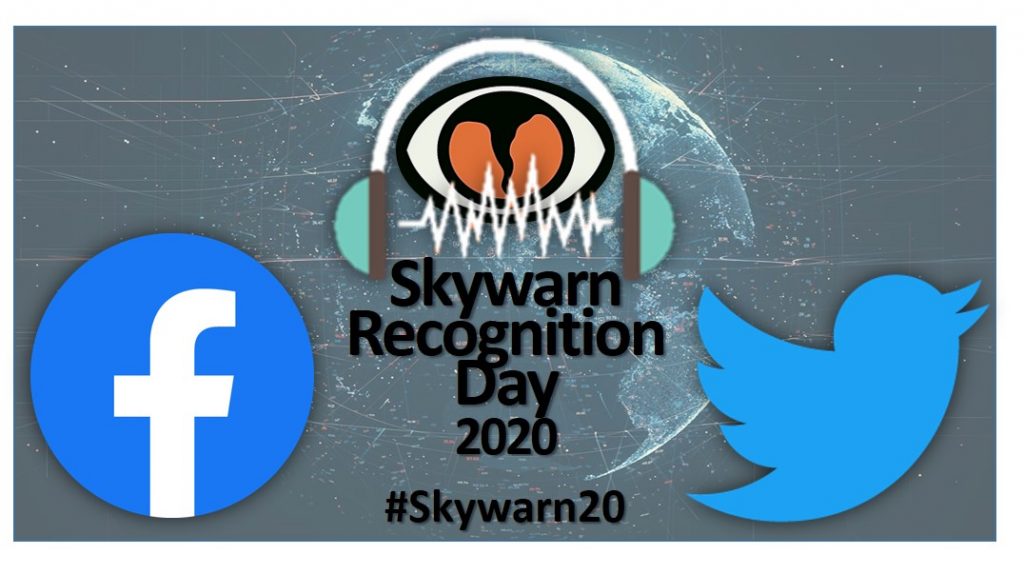
An annual event to recognize SKYWARN storm spotters around the U.S. begins at 7 p.m. ET Friday, Dec. 4. SKYWARN Recognition Day (SRD) is traditionally at 24-hour on-the-air amateur radio special event, because hams were the first SKYWARN storm spotters. In past years, volunteer hams activated special event stations at NWS forecast offices, using club call signs assigned to those offices (e.g. WX9IWX for the Northern Indiana office). Other hams attempted to contact as many different NWS offices as possible.
This year, however, will have a slightly different look.
First, few weather office club call signs will be activated because the National Weather Service is prohibiting volunteer access to the offices.
Second, in lieu of trying to contact as many weather offices as possible, NWS is encouraging amateur radio participants to register for and exchange SRD numbers with each other.
Third, because a growing number of SKYWARN storm spotters use social media instead of ham radio to report severe weather, this year’s SRD will have a greater social media emphasis.
SRD Numbers
The NWS will issue to all registrants a number to be used during SRD contacts. This is not a spotter ID number for use during severe weather events, it’s for the 2020 SRD only. Each number will include the three-letter ID of the registrant’s nearest NWS forecast office. For example, a Fort Wayne spotter’s SRD 2020 number might turn out to be “IWX-123”.
Anyone, including people who are not licensed hams, may register for an SRD number by visiting the SRD website and clicking on the link near the top that reads, “SKYWARN™ Registration Form.” Registrants will obtain their numbers by looking themselves up on a list on the same website. That list will last be updated Friday morning, Dec. 4, so anyone who wishes to obtain an SRD number for the 2020 event should register by Thursday evening.
During the 24-hour-period that begins at 0000 UTC Dec. 5 (7 p.m. ET Dec. 4), participating stations will call “CQ SKYWARN” on many different bands (including HF, VHF and UHF) and modes. Digital voice modes, including Echolink, IRLP, D-Star and DMR will be in play. During each contact, operators will exchange signal reports, names, locations, weather observations and SRD numbers. Stations without SRD numbers may contact stations that have SRD numbers and stations with SRD numbers may contact each other. NWS encourages hams who are SKYWARN spotters to use the event to educate hams who are not spotters about the SKYWARN program.
This is not a contest, so there are no log submissions. After the event ends at 2400 UTC Dec. 5 (7 p.m. ET Dec. 5), however, NWS encourages participating stations to submit via the SRD website a summary of contacts made.
Social Media Elements
NWS has set up a special Facebook group for SRD. At the time of this writing, it’s configured as a “private” group, but it’s easy to join. NWS plans informative, live videos on the Facebook group during the 24-hour period of SRD.
In addition, NWS encourages SKYWARN spotters to watch Twitter and Facebook during the SRD 24-hour period for posts using the hashtag #SKYWARN20 and to reply with their SRD numbers.
For More Information
For more information, monitor the SRD Facebook group, the SRD web page, and the website, Facebook page and Twitter feed of your local NWS office. In addition, the website of the VOIP Hurricane Net plans to publish information about the use of Echolink, IRLP and other digital voice modes during SRD.

Planned on just listening in but after the great explanation above I will definitely try to make some contacts ! Thanks for the great info ! Need to make sure I know how to stay within the band allocations. It will be my first on-air after my Tech License. KE8QAS Can’t wait ! 73 !